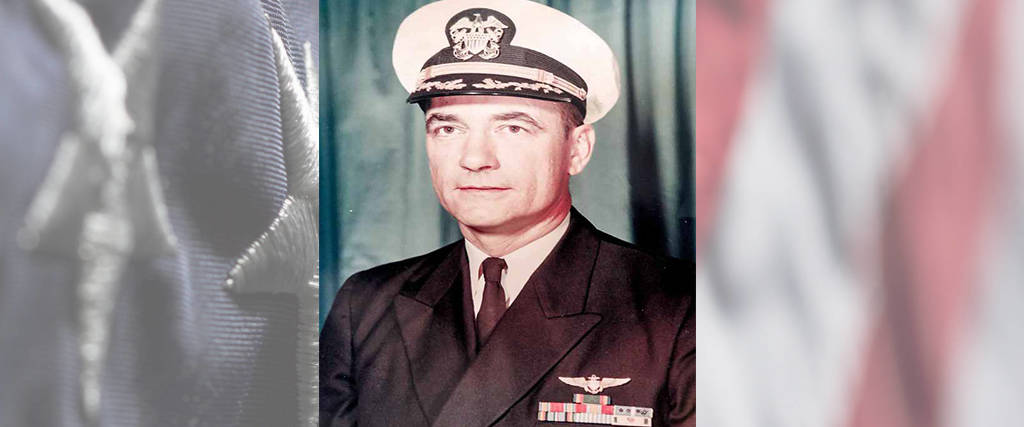U.S. Navy Korean War & Vietnam War Geneva, IL Flight date: April, 2019
By Carla Khan, Honor Flight Chicago Veteran Interviews Volunteer
John Robert Kemble grew up in Iowa, joining the U.S. Navy in 1946. His enlistment was an easy choice. Not only had one of his two older brothers already joined the Navy but his father had served in the Navy during WWI. His father re-enlisted after Pearl Harbor and died while at sea. Besides, John explains, his father brought home the Navy’s Blue Jacket’s Manual from WWI and John had read it several times by the time he was 10-years-old.
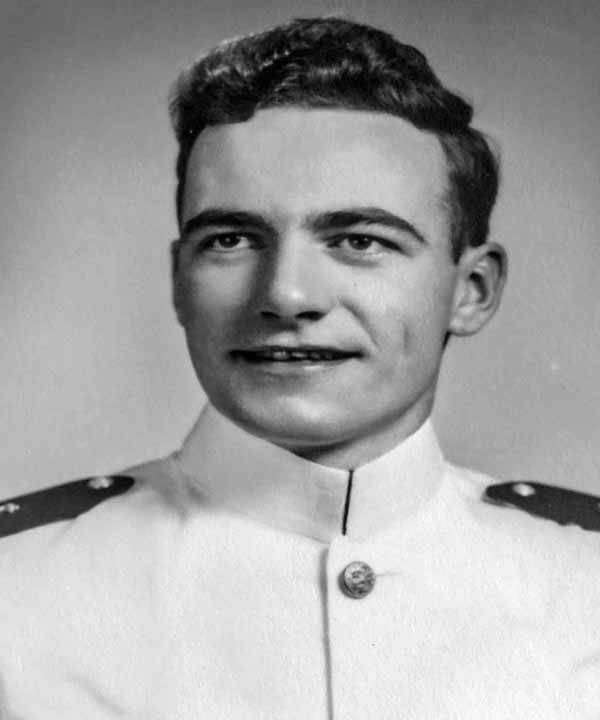
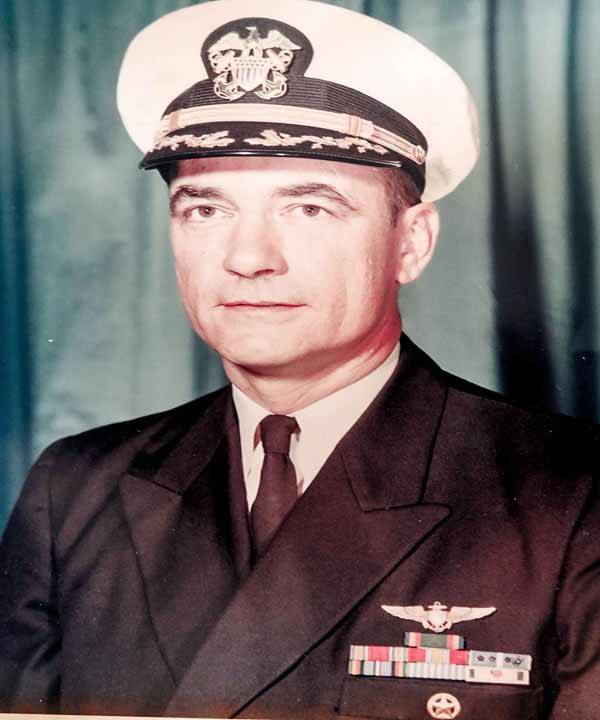
Initially, he was sent to boot camp in San Diego where his brother, Tom, convinced him that applying for the Naval Academy Prep School would be a good thing to do. Both brothers were accepted and after completing boot camp, a call went out for them to attend the school. After six months of Naval Academy Prep School, John entered the U. S. Naval academy with the Class of 1951. Brother Tom also was accepted, but chose to turn down the appointment.
Upon graduation, John had a month’s leave before sailing on the USS Chara (AKA-58) to Japan. Arriving at Sasebo, John immediately met up with his brother, Tom, who had subsequently changed his mind about the Naval Academy and was serving there in the Naval Reserve. In August of 1951, John was assigned as a Junior Officer to the USS Helena (CA-75), a heavy cruiser equipped with nine 8-inch guns. The Korean War was going on and the Helena was patrolling the coast line. During one of the trips that Fall, a sailor suddenly noticed water splashing up and asked, “Sir, are we under fire?” At that moment, the Helena was hit by an enemy shell. The sailor was injured by shrapnel. Fortunately, the sailor as well as the ship survived, but all felt it had been a close call.
In 1952, at the end of his second tour, they were on their way back to the States when the ship was ordered to detour to Guam. The crew had a big surprise, because then President-Elect Eisenhower came on board to hitch a ride to Pearl Harbor. Ike had promised that he’d visit the Korean War zone if he were elected and he was good to his promise. The atmosphere was relaxed and pleasant. The Secret Service hauled two cases of whiskey aboard, although the officers were not allowed to consume any alcohol, not even if offered by a president-elect. As Ike loved to shoot skeet, he was given plenty of opportunity while on board. He enthusiastically aimed at the target and in the process, nearly hit a helicopter parked on the deck. In January of 1953, the USS Helena went to Bremerton, Washington, for yard period. This is when the ship gets torn apart and overhauled.
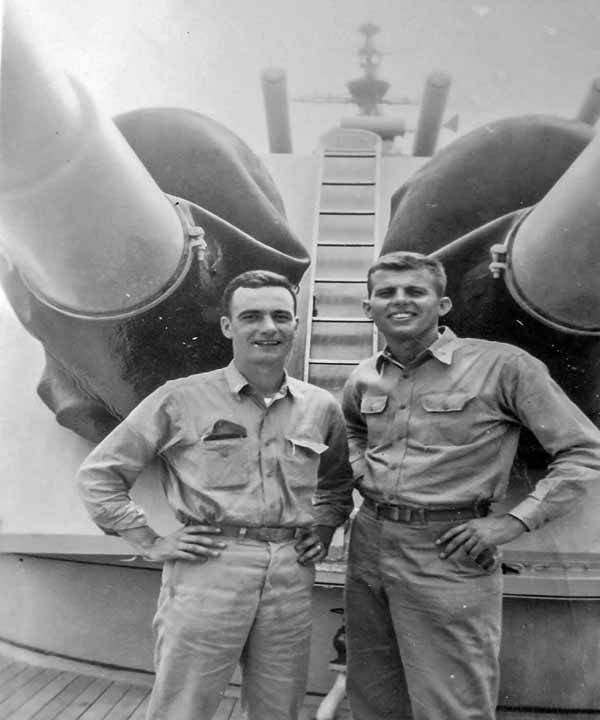
John had applied for flight training in June of 1952 but failed the hearing test, something which he attributed to high noise levels during gun fire. In March of 1953, he re-applied and this time passed. Instead of going to Pensacola, Florida, John received orders to report to the First Marine Division in Korea and was stationed in an outpost of the DMZ. As an officer, John monitored the enemy’s movements as well as was informed when our troops wanted to advance. He then would give directions to the ships where to shell. The Base was at a distance of about five miles from the front lines. Housing for John and about 150 men was in Quanset huts.
When John reported to duty on July 7, 1953, as a Naval Gunfire Officer with the First Marine Division in Korea, Armistice Day was just a few weeks later on July 25, 1953. He still modestly credits himself with intimidating the enemy enough to cause a swift surrender.
While in Korea, John learned how to drive by practicing with a Jeep. When, in May of 1954, John left from San Francisco for Pensacola, Florida, to start flight training, he bought a 1953 Chevy which he drove across country. In September of that year, during a “Sadie Hawkins Day” dance at the Officers Club at Whiting Field in Milton, Florida, he met a young lady, Joy McCaskill. They hit it off so well that John asked her to marry him. Upon completion of flight training, on October 7, 1955, John and Joy were married. They had a long and happy marriage and raised three children: a girl and two boys.
John was assigned to VA-55, an Attack Squadron of the U.S. Navy based at Naval Air Station Miramar, where he flew the A-1 Skyraider as well as the FJ-4B. The squadron deployed on the carrier USS Hancock (CV/CVA-19) and later on the USS Bennington (CV/CVA/CVS-20) to the Far East. He was able to accumulate over 100 arrested landings. After four years of flying off aircraft carriers, John returned to Pensacola in 1959 and spent three years as a flight instructor teaching formation flying. In 1962, he was back at sea on the USS Intrepid (CV/CVA/CVS-11) for two years, serving in the Air Department. He next was assigned to VC-4 (Fleet Composite Squadron) in Oceana, Virginia, flying the F-8 Crusader and the S-2. He finished this tour as Commanding Officer in 1968.
His follow-up assignment was on the USS Kitty Hawk (CV-63) as Air Officer. He joined the ship in the Gulf of Tonkin. He still remembers the respect he felt when looking out from his climate-controlled tower onto the deck where some 200 seamen, average ages 18-19 years old, worked together in all kinds of weather to handle the aircraft. Commander Kemble and his crew completed at least 16,000 safe airwing launch strikes and landings of which all pilots returned safely!
1969 was the year when the entire Kemble family moved to Bremerton, Washington, where USS Kitty Hawk had a 10-month yard period. They lived there for a little less than a year and in June of 1970 moved to Coronado, California. This was a great event because the whole family was allowed to make the move by ship.
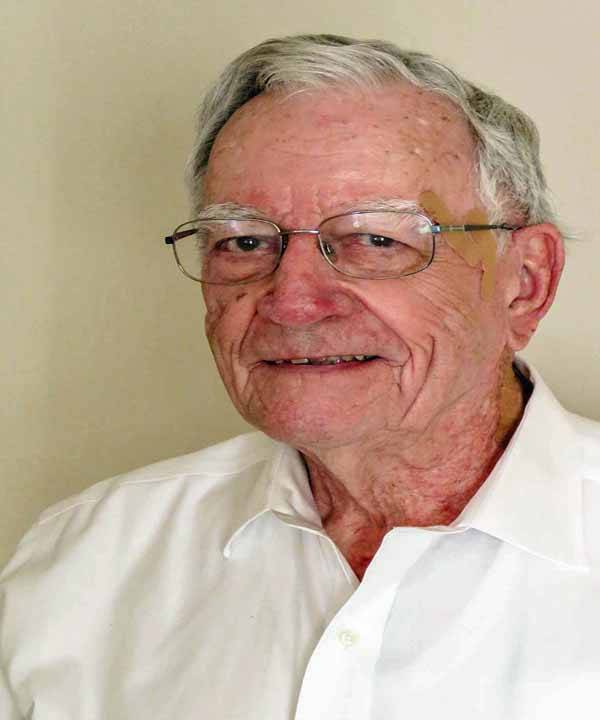
In 1971, Commander Kemble joined the staff of the Commander of the Naval Air Force Pacific Fleet. He kept this position until his retirement in 1973. He worked for General Dynamics Convair, and then Northrop. In 1992, a second retirement saw John and Joy return to Pensacola. But when Hurricane Ivan visited in 2004 and completely destroyed their house, it was time to move to higher ground in Geneva, Illinois, where they could also be closer to their daughter.
John (Commander Kemble) looks with pleasure and gratitude back on his Naval career. He suspects that his long absences and the frequent moves on occasion might have been hard on his family although he has been reassured that “Mom was a strict ruler” over their three children. Joy passed away in 2012. Commander Kemble now enjoys his children, grandchildren and new “bonus family” from his second marriage to Berniece. His pace of life has slowed somewhat but his goal for 2019 is to shoot his age, 90, in golf.



